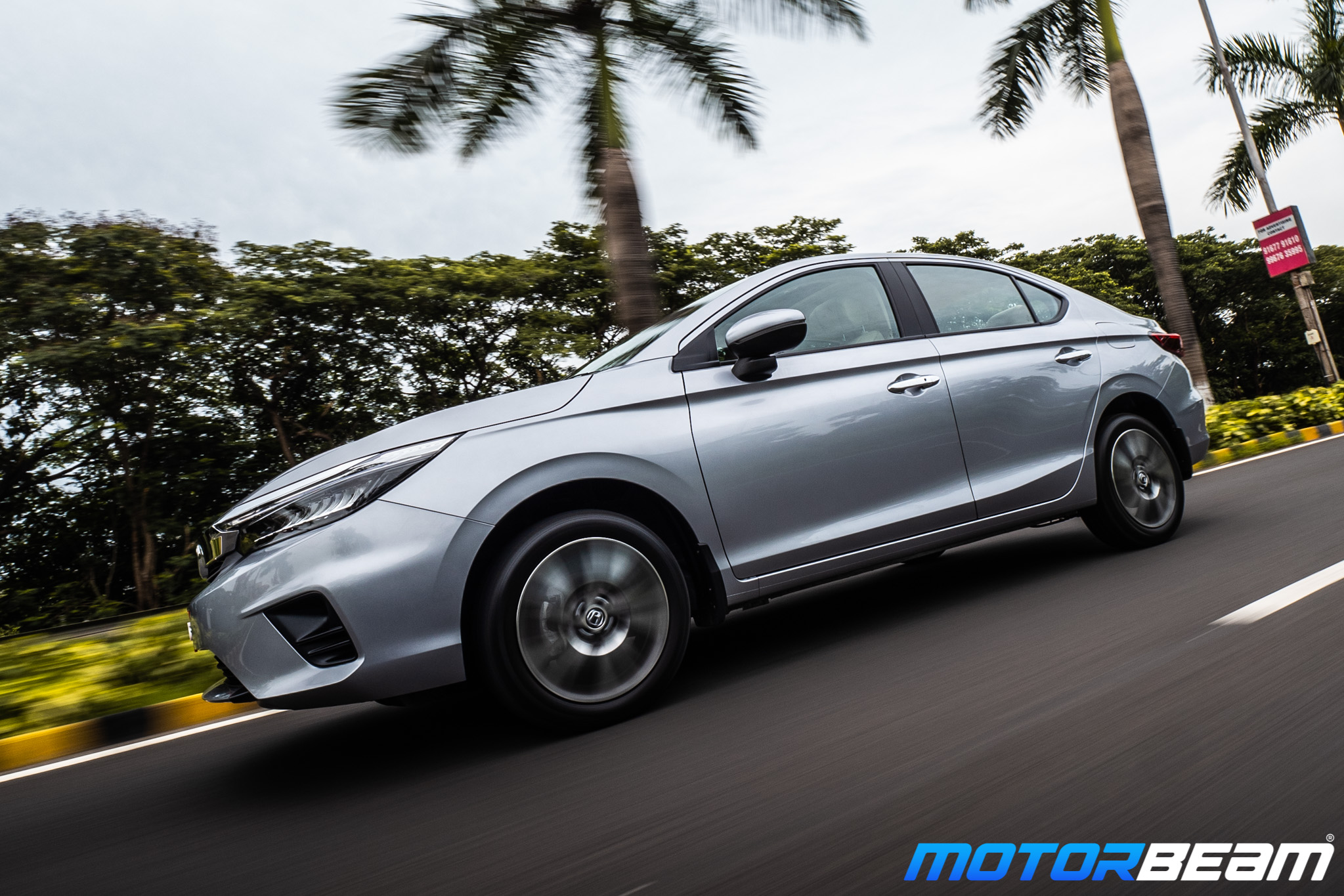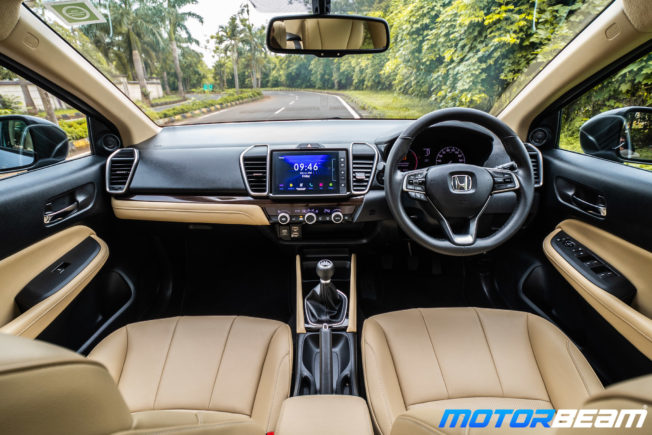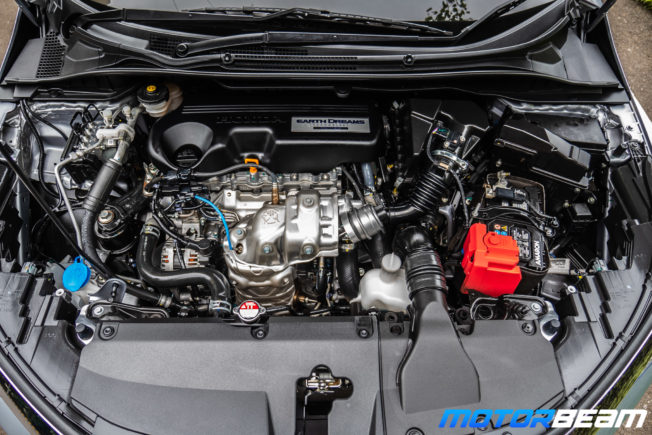
Honda established its manufacturing plant in India in 1995. Soon after the establishment, they launched the 1st generation Honda City in India in 1998. The facelifted version of the 1st generation Honda City had 3 engine trims, one of which was the 1.5L VTEC engine producing 105HP. It is still very popular among car enthusiasts for the sheer power it offered back then!
The 2nd generation Honda City was launched in 2003 with a 1.5L i-DSI petrol engine producing 77 HP. The 2nd generation Honda City was also known as Dolphin City packed with better interiors compared to the 1st generation but less power. However the mid-life facelift of the 2nd generation Honda City saw a 1.5L VTEC engine producing 98.63 HP and 132NM of torque.
The 3rd generation Honda City was launched in 2008 which put the sales numbers of the City on fire. The 3rd generation City looked more youthful and was a fun to drive car. The City was powered by a 1.5L i-VTEC petrol engine producing 115.39 HP and 145NM of torque.
November 2014 saw Honda launching the 4th generation City which had an option of a diesel engine for the first time in the City. The 4th generation City was known for its sharp looks. The 1.5L i-DTEC engine was powered by 98.63HP and 200NM of torque whereas the 1.5L i-VTEC generated 117.36HP and 145 NM of torque.
Honda launched the 5th generation City in July 2020 in India with a 1.5L i-DTEC and 1.5L i-VTEC engine. The i-DTEC has similar specifications as the one on the 4th generation City, however, the i-VTEC has changed to a DOHC unit instead of a SOHC in the 5th generation.
Pros – Design Language, Peppy Engine, Driving Feel, High-Speed Stability
Cons – No Diesel Automatic, No Turbo-Petrol Engine, No Adjustable Headrests At The Rear
Honda City Exteriors
The new City is 4549 mm in length, 1748 mm in width and 1489 mm in height. This implies that the new generation Honda City is 109 mm longer, 3 mm wider and 6 mm shorter in height compared to the fourth generation Honda City. The wheelbase hasn’t changed though with the two wheels being 2600 mm apart.
The car comes with diamond-cut and two-tone finished R-16 multi-spoke alloy wheels in all the variants. The City gets a massive chrome grille in the centre with a Honda logo. It acquires complete LED DRLs merging into the chrome grille. From the side, the 5th generation Honda City does get sharp looks but not as much as it was in the 4th generation. Nevertheless, the car is packed with cuts and creases on the side along with integrated LED turn indicators on door mirrors.
The door handles have a chrome finishing and the black sash tape is present on the B-Pillar across all the variants. It also has a shark fin antenna on the rear side of the car.
Honda City Interiors
The City gets premium beige and black two-tone colour coordinated interiors. Though the dashboard design is conventional when compared to the 4th generation City, the car gets 20.3 cm advanced touch screen display audio with smartphone connectivity (Android Auto, Apple CarPlay, Weblink). The fifth-generation Honda City gets physical controls for air conditioning giving an impression that Honda is aiming for feedback. It gets soft-touch leather upholstery which can be found above the glove box on the co-driver’s side. Piano finish can be found around the gearbox with two cup holders below the air condition controls.
In terms of features, the City gets push-button start/stop, cruise control, automatic headlamps, electrically adjustable and auto foldable OVRMs to name a few. It also gets a three-spoke steering wheel and an analogue-digital instrument cluster which may disappoint when compared to the 4th generation City which had background lights around the instrument cluster and looked more presentable.
Honda City Space
The front seats offer comfort and convenience though they do look slimmer from the naked eye. Jumping onto the backside, the City can easily accommodate three passengers at the back. The middle seat at the rear gets an armrest with twin cup holders. It may get a bit uncomfortable though for the passenger in the middle with the legroom offered, due to the rear ac vents. The car has door pockets with ample space for bottles in case you feel like quenching your thirst in the middle of your journey. There is a good amount of under-thigh support and ample headroom at the rear. The City gets 506 litres of boot space making it 4 litres less than the previous generation. Nevertheless, with a low loading lip, it’s easy to fit in a lot of luggage inside the boot.
Honda City Engine Performance
Honda City is available in two engine trims, one is the 1.5-litre i-VTEC and the other one is the 1.5-litre i-DTEC motor. The 1.5-litre i-VTEC motor produces 121 PS at 6600 RPM with a torque output of 145 NM at 4300 RPM. The diesel engine produces 100 PS of power at 3600 RPM with a torque output of 200 NM at 1750 RPM. Both the engine trims are offered with a 6-speed manual transmission with the petrol engine also getting an option of an automatic 7-speed CVT.
The 1.5L i-VTEC is a new engine from the earth dreams technology with a DOHC unit in place. The engine is extremely silent with minimal vibrations in the lower end. However, as soon as you arrive at the higher end, it is more audible, in a positive sense though, courtesy of the VTEC kicking in. The mid-range offers punchiness and response which is expected from the City. The car loves to be revved redlining all the way to 6600 RPM. The i-VTEC motor has the capability to reach 100 km/hr in 2nd gear courtesy of the tall gearing.
The 1.5L i-DTEC motor hasn’t changed and is the same as was offered in the 4th generation Honda City. The 4 cylinder DOHC unit feels less noisy compared to the older generation. The turbo lag is minimal and the low-end drivability is fairly good. The mid-range offers a good response, however, it’s the top end that lacks punchiness and redlines at 4000 RPM.
Honda City Mileage
The ARAI mileage of the 1.5-litre i-VTEC motor is 17.8 km/l in manual transmission and 18.4 km/l in CVT. In real-world conditions, the 6-speed manual can deliver anywhere between 10-13 km/l depending on whether you’re driving in the city or on the highways.
The ARAI mileage of the 1.5-litre i-DTEC motor is 24.1 km/l. In real-world conditions, one can expect 16-21 km/l depending on city or highway driving conditions along with the driving style.
Honda City Handling
The gear shifts on the manual variant are very smooth and the clutch is also extremely light. The ride quality is very comfortable and the car is very stable at high speeds which is the trademark of the Honda City from the very beginning.
Honda City Comfort
The new generation City has a softer and silent suspension compared to the one in the older generation. It socks up all the bumps and potholes when in action.
Honda City Safety
The 5th generation Honda City secured a 5-star rating in the ASEAN NCAP. In terms of safety, the car is equipped with 6 airbags, ABS with EBD, ISOFIX child seat mounts, immobilizer, high-speed alerts and much more.
Honda City Service
It’s no brainer that the after-sales service offered by Honda is one of the best in India. With Honda crossing 25 years in India, it has built an excellent network and has had a constant growth in the number of service centres built over time.
Honda City Prices
Following are the prices (on road Mumbai) of the Honda City Petrol :
- Petrol V (MT) – Rs. 13.42 lakhs
- Petrol VX (MT) – Rs. 15.12 lakhs
- Petrol ZX (MT) – Rs. 16.28 lakhs
- Petrol V (CVT) – Rs. 15.05 lakhs
- Petrol VX (CVT) – Rs. 16.64 lakhs
- Petrol ZX (CVT) – Rs. 17.84 lakhs
Following are the prices (on road Mumbai) of the Honda City Diesel :
- Diesel V (MT) – Rs. 15.55 lakhs
- Diesel VX (MT) – Rs. 17.17 lakhs
- Diesel ZX (MT) – Rs. 18.38 lakhs
Honda City Resale Value
With the City being the bread and butter for Honda in India, it fulfils a huge demand in the Indian market for customers looking for class, feel and feedback along with high resale value. The resale value also depends on the number of kilometres driven along with the condition in which the vehicle is in.
Honda City Colours
The Honda City is offered in the following colours :
- Radiant Red
- Platinum White Pearl
- Modern Steel
- Golden Brown
- Lunar Silver
Honda City Specs
The following are the specs of the 5th generation Honda City :
- Engine : 1498cc, 4-Cyl, Petrol | 1498cc, 4-Cyl, Diesel
- Power : 121 PS @ 6600 RPM | 100 PS @ 3600 RPM
- Torque : 145 Nm @ 4300 RPM | 200 Nm @ 1750 RPM
- Transmission : 6-Speed MT / CVT | 6-Speed MT
- Fuel Type : Petrol | Diesel
- Tyre Size : 185/55/16 (Front & Rear)
- Suspension : MacPherson Strut (Front), Torsion Beam (Rear)
- Brakes : Disc (Front), Drum (Rear)
- Safety : 6 Airbags, ABS with EBD, Vehicle Stability Assist, Hill Start Assist
- Dimensions (L X W X H) : 4549 mm x 1748 mm x 1489 mm
- Wheelbase : 2600 mm
- Ground Clearance : 165 mm
- Kerb Weight : 1107-1217 kgs
- Fuel Tank Capacity : 40 litres
- Boot Capacity : 506 litres
- Turning Radius : 5.3 metres
Honda City Variants
The Honda City is offered in the following variants in the Petrol trim :
- V
- V(CVT)
- VX
- VX(CVT)
- ZX
- ZX(CVT)
The Honda City is offered in the following variants in the Diesel trim :
- V
- VX
- ZX
Honda City Rating
We give the Honda City a rating of 4.5/5.
Honda City Upcoming Models
Honda is planning to launch the hybrid version of the City soon in India. The Honda City hybrid would make use of the firm’s intelligent multi-mode drive (i-MMD) hybrid system that would consist of an integrated starter generator (ISG) which would be coupled with the 1.5L i-VTEC engine and a second electric motor fed by a lithium-ion battery.
Honda City vs Hyundai Verna
Hyundai Verna is available in 1-litre 3 cylinder turbo petrol whereas the Honda City has not been offered with a turbo engine yet. The diesel engine of the Hyundai Verna is more powerful and punchy than the diesel engine of the Honda City however if petrol engine and rear seat comfort is a priority for you then Honda City should be your pick. The City is 109mm longer, 19mm wider and 14mm taller than the Hyundai Verna.
Honda City vs Maruti Ciaz
The Ciaz gets a hybrid engine which is not offered by any of the competitors yet. In terms of power, the Honda City is more powerful when compared to the Maruti Ciaz. The torque output is also higher in the Honda City in comparison to the Ciaz. The Honda City is 59 mm longer, 18 mm wider, 4 mm taller than the Ciaz.
Honda City vs Skoda Rapid
The built quality of the Skoda Rapid is arguably one of the best in the segment. However, it only has an option of a 1-litre turbocharged petrol engine. The City is 136 mm longer, 49mm wider and 23mm taller than the Skoda Rapid.
Honda City vs Volkswagen Vento
Just like the Skoda Rapid the Volkswagen Vento is only available in a 1-litre turbocharged engine option. The City is 159 mm longer, 49mm wider and 22mm taller in the Volkswagen Vento.


















